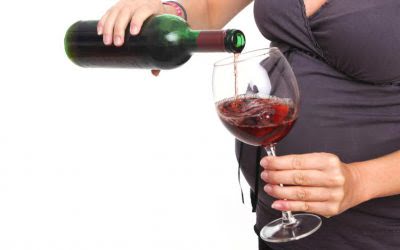Fatally injured drivers with BACs of 0.15 percent or higher, relative to zero-BAC drivers, were much more likely to have been classified by informants as “problem drinkers” (31 percent vs. 1 percent). Finally, fatally injured drivers with BACs of 0.15 percent or higher were much Top 5 Advantages of Staying in a Sober Living House more likely than those with no BAC to be driving from bars (26 percent vs. 0 percent) or from restaurants or other people’s homes (34 percent vs. 22 percent). Tough enforcement of drunk-driving laws has been a major factor in reducing drunk-driving deaths since the 1980s.
- That’s why planning ahead, making personal rules about drinking and driving, knowing your transportation alternatives, and always having a few plan B’s in your mind can help ensure you never get behind the wheel after you’ve been drinking.
- For example, some people believe that coffee, water, sports drinks, or food can make them less drunk.
- The numbers of traffic deaths involving people with BACs up to 0.08 percent had the smallest proportional decline (19 percent) from 1982 to 2002 (see figure 2).
- Alcohol test results from drivers stopped in the 1996 National Roadside Survey of weekend nighttime drivers were compared with the alcohol involvement of drivers in weekend nighttime single-vehicle fatal crashes, as determined by NHTSA for 1995 and 1996.
- The FARS does not routinely record the race and ethnicity of people who die in motor vehicle crashes.
- Research shows that the more complex a task is, the more alcohol slows reaction time.
Alcohol Dependence and Involvement in Alcohol-Related Crashes
“Very few people set out to become drunk drivers,” write the authors of an older U.S. “However, they do set out to drink when they know they are going to drive, and they do set out to drive when they know they are going to drink” (4). Drunk driving can lead to lives lost, jobs lost, severe injury, legal trouble, debt, and incarceration. Getting a DUI may also result in emotional consequences such as depression or PTSD, which affects your mental health. Seeking help for alcohol addiction can be a good first step to not just resolving any existing issue with alcohol, but also to show the court that you take your DUI seriously—and that you’ll do what it takes to not drive drunk again. In a growing number of states, drivers who are convicted of DUI are required to install ignition interlock devices on their personal vehicles.
- In some states penalties for drunk drivers under the age of 21 are even harsher than what adults over 21 face, and your license will likely be suspended if you are convicted.
- Although 14 percent of drivers in alcohol-related fatal crashes in 2002 were between 16 and 20, this age group represents only 7 percent of the population.
- We will continue until there are zero drunk-driving crashes on our roadways.
- From 2003 to 2012, there was a nearly 21 percent increase in women 18 and over arrested for driving under the influence (DUI) and an 18.6 percent increase in women arrested for drunkenness.
- Did you know that you can also get a DUI for driving under the influence of drugs?
safety steps to prevent drinking and driving

Traffic crashes are more likely to result in death or injury if alcohol is involved. Of all alcohol-related crashes in 2002, 4 percent resulted in a death, and 42 percent in an injury. In contrast, of the crashes that did not involve alcohol, 0.6 percent resulted in a death, and 31 percent in an injury.
Typical Penalties for a First, Second, and Third DUI
Another thing that happens when you get a DUI is that you will be given a ticket or a summons at the time of your arrest. This tells you the date that you must appear https://thebostondigest.com/top-5-advantages-of-staying-in-a-sober-living-house/ in court to face driving under the influence charges. When alcohol is consumed, it passes from the stomach and intestines and is absorbed into the bloodstream.

Risks of impaired driving
In 2019, 1,775 lives were lost in accidents where a driver’s BAC was under 0.08% (1). In the United States, more than one person per hour is killed in a drunk driving accident (1). If an individual is arrested for a DUI-type offense, the arresting officers have the responsibility to remove the individual from the situation and get them off the road. Typically, this means taking them into the police station, booking them, and then putting them in jail until they post bond. If you survived a drunk-driving crash, you may be at risk for PTSD and experience symptoms including nightmares, emotional numbness, difficulty sleeping, concentration issues, jumpiness, irritability, and hostility. In all states, your sentence will include the loss of driving privileges for a period of time, even for a first-time DUI conviction.
BAC and Fatal Crash Involvement
- Penalties should include a combination of administrative sanctions (e.g. driving licence suspension) and criminal ones (e.g. mandatory minimum fines) of adequate severity.
- One study in California found that when the State changed from a secondary to a primary law, the largest percentage increases in safety belt use, nearly 40 percent, were among motorists who were driving after drinking (Lange and Voas 1998).
- In today’s courts, if you deny the charges, plead not guilty, and try to fight the case, chances are you (and everyone else in the courtroom) will see a video of you failing field sobriety tests.
- Travelling to the United States is a dream for many individuals around the world.
- Even taking the lowest figure for each of these costs, a DUI conviction could set you back around $6,000.
- Alcohol-dependent people are over-represented in all alcohol-related traffic crashes, as are those who begin drinking at younger ages.
